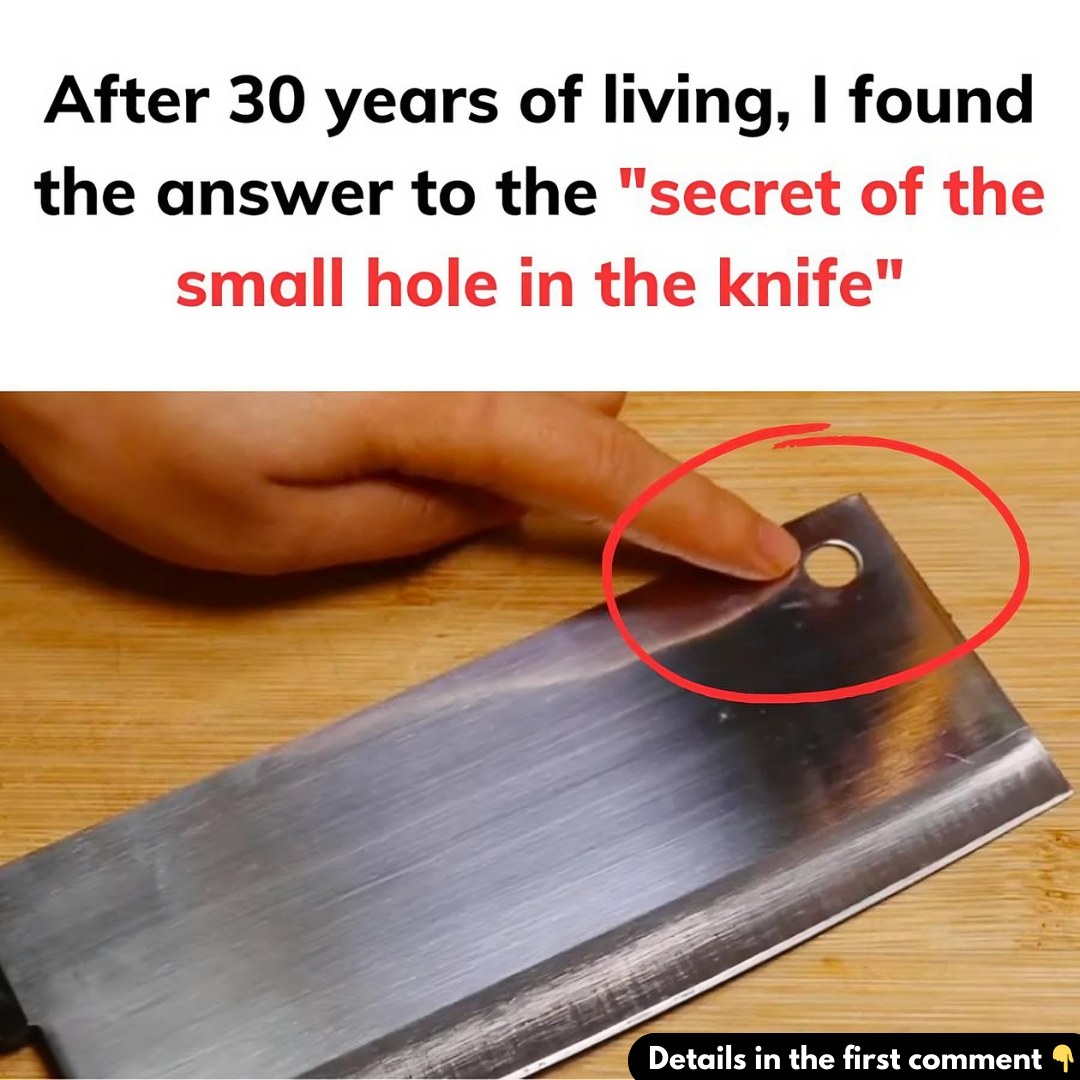Ever noticed the little round hole in some kitchen knives and wondered what it’s for? At first glance, it might seem like a quirky design element, but this small detail is actually a masterstroke of engineering. It enhances the knife’s efficiency, durability, and versatility in ways you may not have imagined. Let’s dive into the hidden brilliance of this seemingly simple feature and explore its practical applications.

1. Shock Absorption: A Design Built for Durability
One of the primary purposes of the small hole is to help the knife absorb shock. When cutting through tough ingredients like bones or thick meat, the blade experiences significant force. Without a mechanism to disperse that pressure, the knife could crack or snap under strain.
The hole works as a pressure disperser, redistributing the force across the blade. This design not only prevents damage but also enhances control and grip, ensuring the knife performs well under heavy use. It’s a subtle yet effective way to increase the tool’s lifespan and maintain its reliability.
2. A Smart Solution for Storage and Maintenance
Proper care is essential to keeping knives in top condition, and the small hole plays a surprising role here. After washing, knives left flat to dry can retain water, leading to rust or mold.
The hole offers a practical storage solution—you can hang the knife to allow proper drainage and airflow. This keeps the blade dry, prevents rust, and maintains its sharpness. Plus, hanging your knives not only protects them but also keeps your kitchen organized and visually appealing.
3. A Handy Tool for Removing Snail Tails
Cooking snails can be challenging, especially when it comes to removing their tails. Traditional methods like scissors are time-consuming and messy.
Enter the small hole: by inserting the snail tail into the hole and pulling gently, you can remove it cleanly without damaging the meat. This quick, efficient trick turns a frustrating task into a breeze, making the hole an invaluable tool for seafood preparation.
4. Effortless Seed Removal from Fruits
Removing seeds from small fruits like red dates can be tedious and wasteful. Using scissors or a knife often results in losing some of the fruit’s pulp.
With the knife’s hole, you can simplify the process. Place the fruit on a cutting board, align the seed with the hole, and press down firmly. The seed pops out cleanly, leaving the pulp intact. This technique works for other small fruits too, saving time and reducing waste.
5. Making Meat Mincing Easier
Mincing meat by hand can be tiring, especially when preparing large quantities. The repetitive motion of chopping with a heavy blade can strain your wrists.
Here’s a clever tip: insert a chopstick through the knife’s hole and hold it with your free hand while chopping. This stabilizes the blade, making it easier to mince meat efficiently without fatigue. It’s a small adjustment that makes a big difference for home cooks.
6. Inspiring Creative Cooking Techniques
Beyond its functional uses, the small hole can also encourage culinary creativity. Whether shaping dough, threading herbs for garnishing, or decorating baked goods, this feature adds versatility to your kitchen routine. With a little imagination, the possibilities are endless.
Why the Small Hole Matters
At first glance, the hole might seem insignificant, but it’s a thoughtfully designed feature that enhances your knife’s functionality. Here’s why it’s a game-changer:
- Durability: It reduces stress on the blade, prolonging its life.
- Convenience: It offers a simple storage solution, keeping your knife safe and dry.
- Versatility: From shock absorption to seed removal, it turns your knife into a multi-purpose tool.
Many knife manufacturers incorporate this feature as a standard because of its undeniable practicality and value.
Conclusion: A Small Feature with Big Impact
The small hole in a kitchen knife is more than a design choice—it’s a testament to practical engineering and thoughtful craftsmanship. Whether you’re using it to absorb shock, maintain your blade, or tackle unique culinary challenges, this little detail proves its worth in unexpected ways.
The next time you pick up a knife with a small hole, take a moment to appreciate its hidden brilliance. Try out some of the tips mentioned here, and you might just discover how much more versatile your knife can be. Who knew such a tiny feature could make such a big difference?





